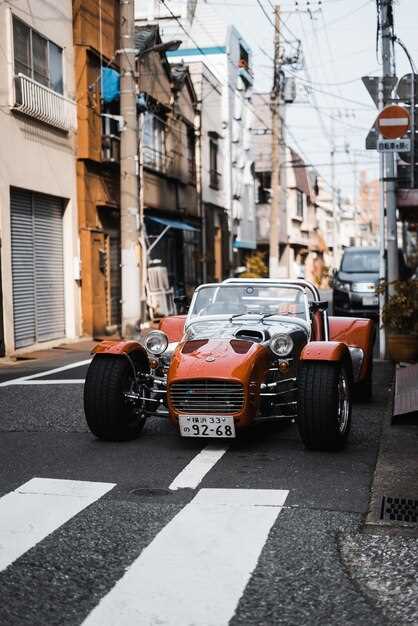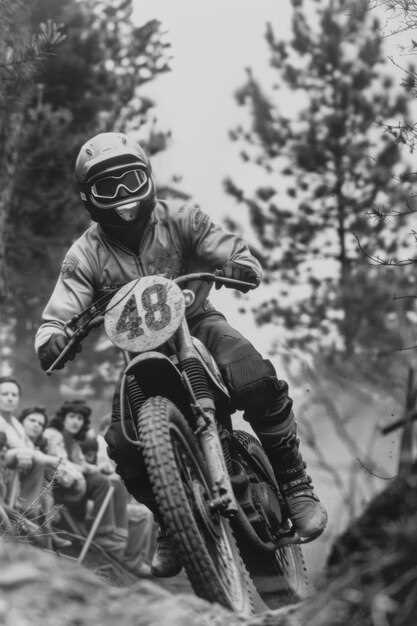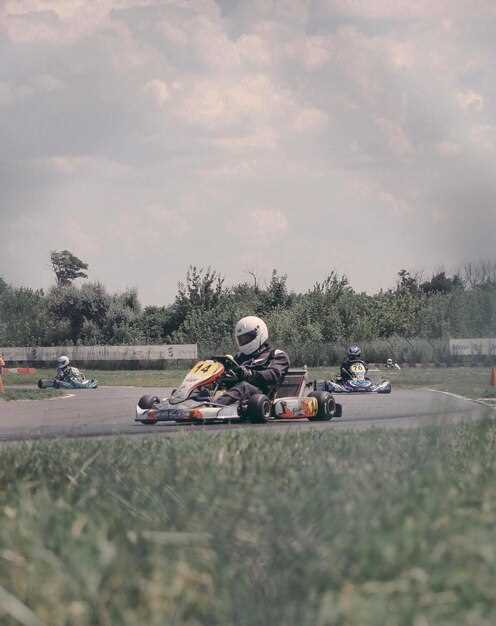
The world of vintage motorsports offers a captivating glimpse into the evolution of classic racing and its enduring legacy. From the roaring engines of early racecars to the sleek designs of mid-20th century vehicles, each era has contributed unique stories and unforgettable moments to the history of racing. The passion for these classic machines links enthusiasts, drivers, and fans alike, creating a vibrant community dedicated to preserving the past.
Throughout the years, motorsports has witnessed remarkable feats of engineering and daring performances that have shaped its identity. Iconic races, such as the Monaco Grand Prix and the Le Mans 24 Hours, have showcased the skill and determination of drivers while highlighting innovations in automotive design. These events stand as milestones, not only for competitive racing but also for the cultural impact they have had on society, inspiring generations through the thrill of speed and competition.
As we journey through the timeline of vintage motorsports, we will explore the defining moments that have left an indelible mark on the sport. From legendary rivalries to groundbreaking technological advancements, the stories of classic racing will continue to resonate and inspire, proving that the spirit of competition is timeless.
Key Milestones That Shaped Vintage Racing

The history of vintage motorsports is marked by several key milestones that laid the foundation for what we recognize today as classic racing. One of the earliest significant events occurred in 1906, when the inaugural Monte Carlo Rally took place. This event showcased the excitement of automobile racing on public roads and set the stage for future competitive races.
In the 1920s, the Mille Miglia emerged as a defining race in Italy, attracting some of the most prestigious car manufacturers and drivers. This long-distance race was celebrated for its challenging routes and stunning scenery, illustrating the blend of speed and endurance that vintage racing exemplified.
The emergence of iconic race tracks in the mid-20th century transformed vintage motorsports. The introduction of the Nürburgring in Germany during the 1920s provided a venue that tested both driver skill and car performance, establishing a benchmark for classic racing events across the globe.
The 1950s heralded the start of the Formula 1 World Championship, a premier platform for showcasing vintage cars. This era introduced advanced engineering and international competition, significantly influencing the evolution of classic motorsports. Legendary drivers such as Juan Manuel Fangio and Stirling Moss became household names, further solidifying the sport’s appeal.
The establishment of the Goodwood Revival in 1998 rekindled interest in vintage racing by bringing together classic cars and motorsports enthusiasts. This event celebrated the nostalgia of historic racing while emphasizing the cultural significance of vintage vehicles, ensuring the continued passion for motorsports history.
In recent decades, the rise of vintage racing series worldwide has preserved the legacy of classic cars. These events attract participants and spectators alike, fostering a community dedicated to honoring the craftsmanship and spirit of racing from the past. The connection to history and tradition in vintage motorsports continues to inspire future generations of racers and fans.
Legendary Drivers and Their Contributions to Classic Racing
The world of classic racing is significantly shaped by the legendary drivers who have left an indelible mark on its history. These individuals not only showcased exceptional talent but also contributed to the evolution of racing cars and techniques. Their passion and dedication have made classic racing a celebrated sport, attracting enthusiasts from all walks of life.
Enzo Ferrari stands out as one of the most influential figures in motorsport history. He transitioned from a successful driver to the founder of the Ferrari brand, which became synonymous with speed and luxury. Ferrari’s innovations in car design and engineering set new standards for performance in the racing world, solidifying his legacy within classic racing.
Juan Manuel Fangio, often referred to as “El Maestro,” was another iconic driver whose prowess on the track defined an era of racing. With an unmatched ability to master various cars, Fangio won five World Championships in the 1950s. His strategic approach and skill in driving different makes showcased the potential of classic racing vehicles and inspired future generations.
Ayrton Senna, while more recognized for his modern career, also contributed significantly to the lineage of classic racing. His relentless pursuit of excellence and thrilling driving style captivated audiences. Senna’s influence extended beyond the track, as he advocated for driver safety and brought a deeper respect for the profession, shaping the narrative of racing history.
Stirling Moss, known as the “Master of Monaco,” was celebrated for his versatility and bravery on the circuit. Moss’s performances in the 1950s, including his remarkable multiple podium finishes without a championship title, highlighted the complexities and fierce competition of classic racing. His style and approach have inspired countless drivers in their pursuit of mastering the sport.
These legendary drivers not only achieved impressive victories but also contributed to a rich tapestry of classic racing history. Their legacies continue to influence modern motorsports, reminding enthusiasts of the thrill and artistry that define this captivating world.
Memorable Races and Events in Vintage Motorsports

Vintage motorsports are marked by a rich tapestry of memorable races and events that have shaped the history of racing. These events not only showcased incredible machines but also highlighted the skills of legendary drivers who pushed the limits of speed and engineering.
One of the most iconic events is the Monaco Grand Prix, first held in 1929. This race, set against the stunning backdrop of Monte Carlo, has become synonymous with elegance and prestige. The tight corners and narrow streets challenge even the most skilled drivers, making it a cornerstone of motorsports history.
Another notable race is the Le Mans 24 Hours, where endurance meets innovation. Since its inception in 1923, this grueling test of speed and stamina has seen manufacturers like Ferrari, Porsche, and Audi battle fiercely for supremacy. The event’s rich narrative includes incredible stories of triumph and disaster that have captivated motorsport enthusiasts for decades.
The Goodwood Revival is a celebration of vintage racing that takes place annually in England. This event recreates the golden age of motorsports, featuring classic cars and bikes racing on the historic Goodwood Circuit. Drivers and spectators alike relish the opportunity to experience the nostalgia of racing history firsthand.
Furthermore, the Indianapolis 500, known as “The Greatest Spectacle in Racing,” has been a pivotal moment in motorsports since 1911. This event has witnessed numerous unforgettable moments, including trickster drivers, strategic pit stops, and breathtaking overtakes, solidifying its status in racing history.
These moments, along with many others in vintage motorsports, illustrate a deep-rooted passion for racing that continues to inspire new generations of enthusiasts. The history of these events reinforces the importance of preserving the legacy of motorsports, ensuring that the thrilling tales of speed and competition endure.

